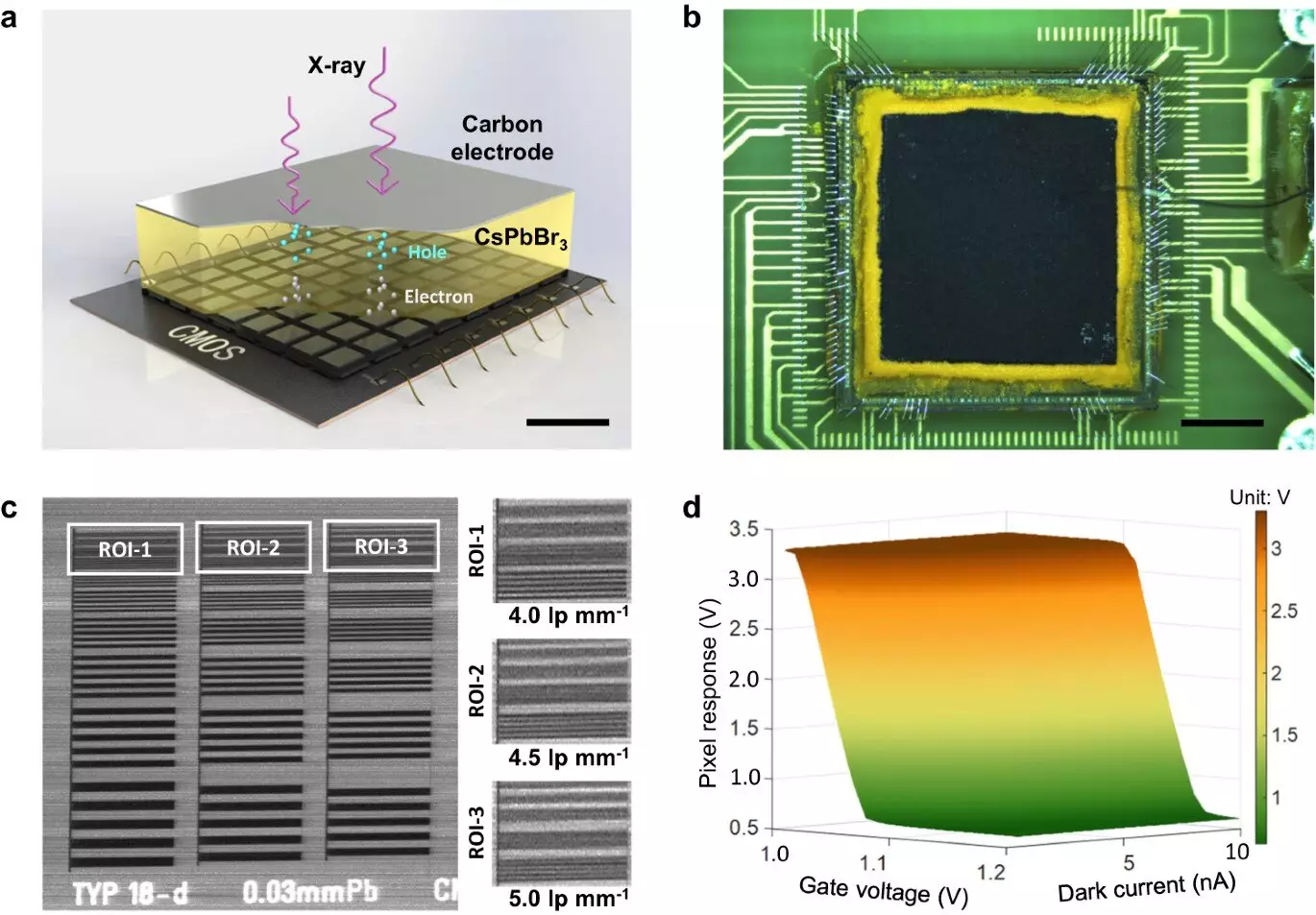The Shenzhen Institutes of Advanced Technology (SIAT) of the Chinese Academy of Sciences, in collaboration with researchers at Central China Normal University, have recently made a groundbreaking development in the field of medical imaging. They have successfully created a high-performance perovskite X-ray complementary metal-oxide-semiconductor (CMOS) detector for medical imaging, as reported in a study published in Nature Communications on Feb. 21.
X-ray imaging plays a crucial role in the diagnosis and treatment of various diseases, especially cardiovascular and cancer conditions. Therefore, the development of advanced X-ray detectors is essential to improve the accuracy and efficiency of medical imaging procedures.
Traditional direct-conversion X-ray detectors made of semiconductor materials offer superior resolution and lower radiation doses compared to indirect-conversion detectors. However, existing semiconductor materials like Si, a-Se, and CdZnTe/CdTe have limitations such as low X-ray absorption efficiency and high costs, making them less than ideal for widespread X-ray imaging applications.
Perovskite has emerged as a promising alternative to conventional semiconductor materials for X-ray detectors. In this study, researchers explored the feasibility of combining perovskite with high-speed pixelated CMOS arrays to create an innovative X-ray detector with enhanced capabilities.
The direct-conversion X-ray detector developed by the researchers features a 300 μm thick inorganic CsPbBr3 perovskite film printed on a dedicated CMOS pixel array. This novel detector exhibited high X-ray detection sensitivity, low dose detection limit, and excellent spatial resolution in experimental 2D and 3D imaging tests.
Overall, the research conducted by the team at SIAT and Central China Normal University showcases the immense potential of lead halide perovskites in revolutionizing X-ray imaging technology. The development of state-of-the-art X-ray detectors using perovskite materials could lead to significant improvements in spatial resolution, readout speed, and detection efficiency, ultimately enhancing the quality of medical imaging for better patient care.


Leave a Reply
You must be logged in to post a comment.